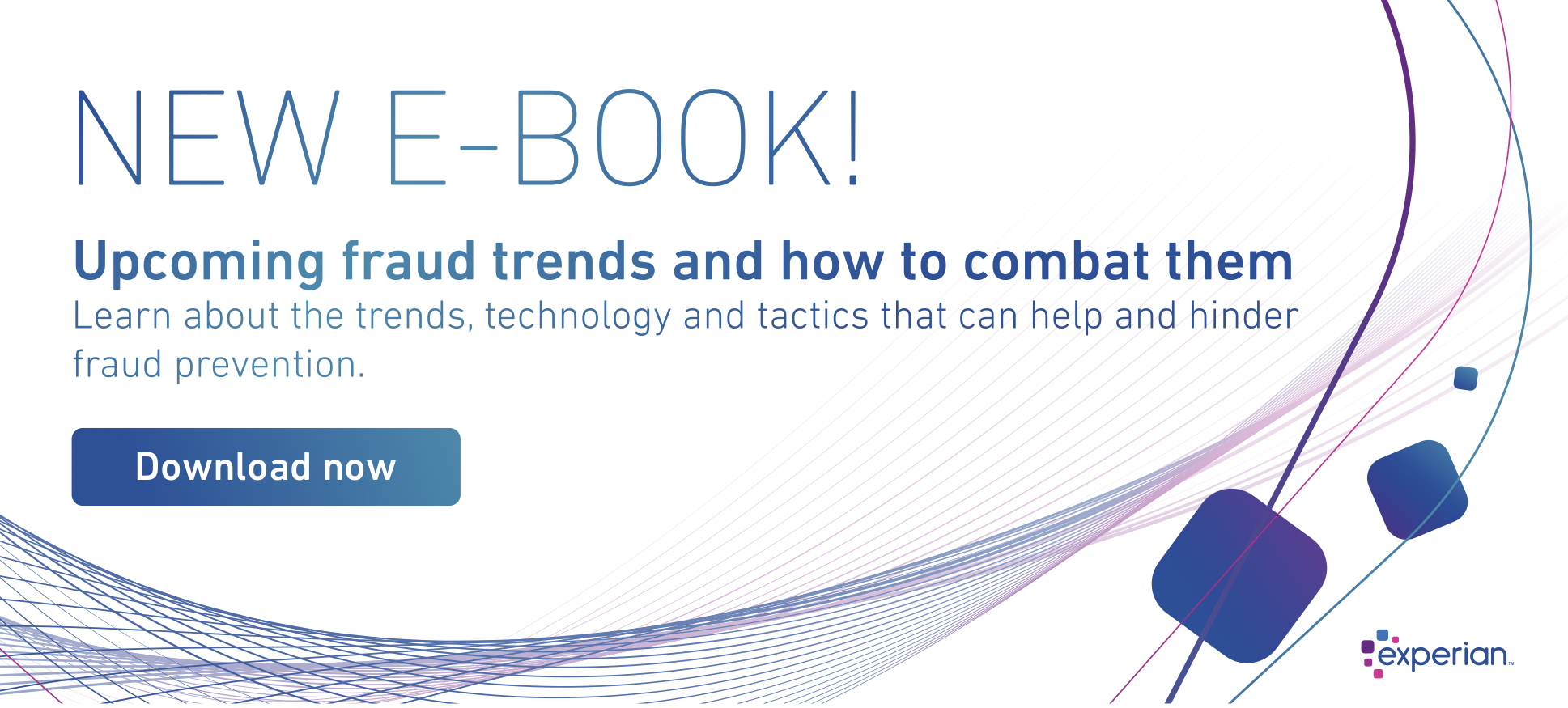Tag: account takeover

Fraud rings cause an estimated $5 trillion in financial damages every year, making them one of the most dangerous threats facing today’s businesses. They’re organized, sophisticated and only growing more powerful with the advent of Generative AI (GenAI). Armed with advanced tools and an array of tried-and-true attack strategies, fraud rings have perfected the art of flying under the radar and circumventing traditional fraud detection tools. Their ability to adapt and innovate means they can identify and exploit vulnerabilities in businesses' fraud stacks; if you don’t know how fraud rings work and the right signs to look for, you may not be able to catch a fraud ring attack until it’s too late. What is a fraud ring? A fraud ring is an organized group of cybercriminals who collaborate to execute large-scale, coordinated attacks on one or more targets. These highly sophisticated groups leverage advanced techniques and technologies to breach fraud defenses and exploit vulnerabilities. In the past, they were primarily humans working scripts at scale; but with GenAI they’re increasingly mobilizing highly sophisticated bots as part of (or the entirety of) the attack. Fraud ring attacks are rarely isolated incidents. Typically, these groups will target the same victim multiple times, leveraging insights gained from previous attack attempts to refine and enhance their strategies. This iterative approach enables them to adapt to new controls and increase their impact with each subsequent attack. The impacts of fraud ring attacks far exceed those of an individual fraudster, incurring significant financial losses, interrupting operations and compromising sensitive data. Understanding the keys to spotting fraud rings is crucial for crafting effective defenses to stop them. Uncovering fraud rings There’s no single tell-tale sign of a fraud ring. These groups are too agile and adaptive to be defined by one trait. However, all fraud rings — whether it be an identity fraud ring, coordinated scam effort, or large-scale ATO fraud scheme — share common traits that produce warning signs of imminent attacks. First and foremost, fraud rings are focused on efficiency. They work quickly, aiming to cause as much damage as possible. If the fraud ring’s goal is to open fraudulent accounts, you won’t see a fraud ring member taking their time to input stolen data on an application; instead, they’ll likely copy and paste data from a spreadsheet or rely on fraud bots to execute the task. Typically, the larger the fraud ring attack, the more complex it is. The biggest fraud rings leverage a variety of tools and strategies to keep fraud teams on their heels and bypass traditional fraud defenses. Fraud rings often test strategies before launching a full-scale attack. This can look like a small “probe” preceding a larger attack, or a mass drop-off after fraudsters have gathered the information they needed from their testing phase. Fraud ring detection with behavioral analytics Behavioral analytics in fraud detection uncovers third-party fraud, from large-scale fraud ring operations and sophisticated bot attacks to individualized scams. By analyzing user behavior, organizations can effectively detect and mitigate these threats. With behavioral analytics, businesses have a new layer of fraud ring detection that doesn’t exist elsewhere in their fraud stack. At a crowd level, behavioral analytics reveals spikes in risky behavior, including fraud ring testing probes, that may indicate a forthcoming fraud ring attack, but would typically be hidden by sheer volume or disregarded as normal traffic. Behavioral analytics also identifies the high-efficiency techniques that fraud rings use, including copy/paste or “chunking” behaviors, or the use of advanced fraud bots designed to mimic human behavior. Learn more about our behavioral analytics solutions and their fraud ring detection capabilities. Learn more

Dormant fraud, sleeper fraud, trojan horse fraud . . . whatever you call it, it’s an especially insidious form of account takeover fraud (ATO) that fraud teams often can’t detect until it’s too late. Fraudsters create accounts with stolen credentials or gain access to existing ones, onboard under the fake identity, then lie low, waiting for an opportunity to attack. It takes a strategic approach to defeat the enemy from within, and fraudsters assume you won’t have the tools in place to even know where to start. Dormant fraud uncovered: A case study NeuroID, a part of Experian, has seen the dangers of dormant fraud play out in real time. As a new customer to NeuroID, this payment processor wanted to backtest their user base for potential signs of fraud. Upon analyzing their customer base’s onboarding behavioral data, we discovered more than 100K accounts were likely to be dormant fraud. The payment processor hadn’t considered these accounts suspicious and didn’t see any risk in letting them remain active, despite the fact that none of them had completed a transaction since onboarding. Why did we flag these as risky? Low familiarity: Our testing revealed behavioral red flags, such as copying and pasting into fields or constant tab switching. These are high indicators that the applicant is applying with personally identifiable information (PII) that isn’t their own. Fraud clusters: Many of these accounts used the same web browser, device, and IP address during sign-up, suggesting that one fraudster was signing up for multiple accounts. We found hundreds of clusters like these, many with 50 or more accounts belonging to the same device and IP address within our customer’s user base. It was clear that this payment processor’s fraud stack had gaps that left them vulnerable. These dormant accounts could have caused significant damage once mobilized: receiving or transferring stolen funds, misrepresenting their financial position, or building toward a bust-out. Dormant fraud thrives in the shadows beyond onboarding. These fraudsters keep accounts “dormant” until they’re long past onboarding detection measures. And once they’re in, they can often easily transition to a higher-risk account — after all, they’ve already confirmed they’re trustworthy. This type of attack can involve fraudulent accounts remaining inactive for months, allowing them to bypass standard fraud detection methods that focus on immediate indicators. Dormant fraud gets even more dangerous when a hijacked account has built trust just by existing. For example, some banks provide a higher credit line just for current customers, no matter their activities to date. The more accounts an identity has in good standing, the greater the chance that they’ll be mistaken for a good customer and given even more opportunities to commit higher-level fraud. This is why we often talk to our customers about the idea of progressive onboarding as a way to overcome both dormant fraud risks and the onboarding friction caused by asking for too much information, too soon. Progressive onboarding, dormant fraud, and the friction balance Progressive onboarding shifts from the one-size-fits-all model by gathering only truly essential information initially and asking for more as customers engage more. This is a direct counterbalance to the approach that sometimes turns customers off by asking for too much too soon, and adding too much friction at initial onboarding. It also helps ensure ongoing checks that fight dormant fraud. We’ve seen this approach (already growing popular in payment processing) be especially useful in every type of financial business. Here’s how it works: A prospect visits your site to explore options. They may just want to understand fees and get a feel for your offerings. At this stage, you might ask for minimal information — just a name and email — without requiring a full fraud check or credit score. It’s a low commitment ask that keeps things simple for casual prospects who are just browsing, while also keeping your costs low so you don’t spend a full fraud check on an uncommitted visitor. As the prospect becomes a true customer and begins making small transactions, say a $50 transfer, you request additional details like their date of birth, physical address, or phone number. This minor step-up in information allows for a basic behavioral analytics fraud check while maintaining a low barrier of time and PII-requested for a low-risk activity. With each new level of engagement and transaction value, the information requested increases accordingly. If the customer wants to transfer larger amounts, like $5,000, they’ll understand the need to provide more details — it aligns with the idea of a privacy trade-off, where the customer’s willingness to share information grows as their trust and need for services increase. Meanwhile, your business allocates resources to those who are fully engaged, rather than to one-time visitors or casual sign-ups, and keeps an eye on dormant fraudsters who might have expected no barrier to additional transactions. Progressive onboarding is not just an effective approach for dormant fraud and onboarding friction, but also in fighting fraudsters who sneak in through unseen gaps. In another case, we worked with a consumer finance platform to help identify gaps in their fraud stack. In one attack, fraudsters probed until they found the product with the easiest barrier of entry: once inside they went on to immediately commit a full-force bot attack on higher value returns. The attack wasn’t based on dormancy, but on complacency. The fraudsters assumed this consumer finance platform wouldn’t realize that a low controls onboarding for one solution could lead to ease of access to much more. And they were right. After closing that vulnerability, we helped this customer work to create progressive onboarding that includes behavior-based fraud controls for every single user, including those already with accounts, who had built that assumed trust, and for low-risk entry-points. This weeded out any dormant fraudsters already onboarded who were trying to take advantage of that trust, as they had to go through behavioral analytics and other new controls based on the risk-level of the product. Behavioral analytics gives you confidence that every customer is trustworthy, from the moment they enter the front door to even after they’ve kicked off their shoes to stay a while. Behavioral analytics shines a light on shadowy corners Behavioral analytics are proven beyond just onboarding — within any part of a user interaction, our signals detect low familiarity, high-risk behavior and likely fraud clusters. In our experience, building a progressive onboarding approach with just these two signal points alone would provide significant results — and would help stop sophisticated fraudsters from perpetrating dormant fraud, including large-scale bust outs. Want to find out how progressive onboarding might work for you? Contact us for a free demo and deep dive into how behavioral analytics can help throughout your user journey. Contact us for a free demo

U.S. federal prosecutors have indicted Michael Smith of North Carolina for allegedly orchestrating a $10 million fraud scheme involving AI-generated music. Smith is accused of creating fake bands and using AI tools to produce hundreds of tracks, which were streamed by fake listeners on platforms like Spotify, Apple Music, and Amazon Music. Despite the artificial engagement, the scheme generated real royalty payments, defrauding these streaming services. This case marks the first prosecution of its kind and highlights a growing financial risk: the potential for rapid, large-scale fraud in digital platforms when content and engagement can be easily fabricated. A new report from Imperva Inc. highlights the growing financial burden of unsecure APIs and bot attacks on businesses, costing up to $186 billion annually. Key findings highlight the heavy economic burden on large companies due to their complex and extensive API ecosystems, often unsecured. Last year, enterprises managed about 613 API endpoints on average, a number expected to grow, increasing associated risks. APIs exposure to bot attacks Bot attacks, similar to those seen in streaming fraud, are also plaguing financial institutions. The risks are significant, weakening both security and financial stability. 1. Fraudulent transactions and account takeover Automated fraudulent transactions: Bots can perform high volumes of small, fraudulent transactions across multiple accounts, causing financial loss and overwhelming fraud detection systems. Account takeover: Bots can attempt credential stuffing, using compromised login data to access user accounts. Once inside, attackers could steal funds or sensitive information, leading to significant financial and reputational damage. 2. Synthetic identity fraud Creating fake accounts: Bots can be used to generate large numbers of synthetic identities, which are then used to open fake accounts for money laundering, credit fraud, or other illicit activities. Loan or credit card fraud: Using fake identities, bots can apply for loans or credit cards, withdrawing funds without intent to repay, resulting in significant losses for financial institutions. 3. Exploiting API vulnerabilities API abuse: Just as bots exploit API endpoints in streaming services, they can also target vulnerable APIs in financial platforms to extract sensitive data or initiate unauthorized transactions, leading to significant data breaches. Data exfiltration: Bots can use APIs to extract financial data, customer details, and transaction records, potentially leading to identity theft or data sold on the dark web. Bot attacks targeting financial institutions can result in extensive fraud, data breaches, regulatory fines, and loss of customer trust, causing significant financial and operational consequences. Safeguarding financial integrity To safeguard your business from these attacks, particularly via unsupervised APIs, a multi-layered defense strategy is essential. Here’s how you can protect your business and ensure its financial integrity: 1. Monitor and analyze data patterns Real-time analytics: Implement sophisticated monitoring systems to track user behavior continuously. By analyzing user patterns, you can detect irregular spikes in activity that may indicate bot-driven attacks. These anomalies should trigger alerts for immediate investigation. AI, machine learning, and geo-analysis: Leverage AI and machine learning models to spot unusual behaviors that can signal fraudulent activity. Geo-analysis tools help identify traffic originating from regions known for bot farms, allowing you to take preventive action before damage occurs. 2. Strengthen API access controls Limit access with token-based authentication: Implement token-based authentication to limit API access to verified applications and users. This reduces the chances of unauthorized or bot-driven API abuse. Control third-party integrations: Restrict API access to only trusted and vetted third-party services. Ensure that each external service is thoroughly reviewed to prevent malicious actors from exploiting your platform. 3. Implement robust account creation procedures PII identity verification solutions: Protect personal or sensitive data through authenticating someone`s identity and helping to prevent fraud and identity theft. Email and phone verification: Requiring email or phone verification during account creation can minimize the risk of mass fake account generation, a common tactic used by bots for fraudulent activities. Combating Bots as a Service: Focusing on intent-based deep behavioral analysis (IDBA), even the most sophisticated bots can be spotted, without adding friction. 4. Establish strong anti-fraud alliances Collaborate with industry networks: Join industry alliances or working groups that focus on API security and fraud prevention. Staying informed about emerging threats and sharing best practices with peers will allow you to anticipate new attack strategies. 5. Continuous customer and account monitoring Behavior analysis for repeat offenders: Monitor for repeat fraudulent behavior from the same accounts or users. If certain users or transactions display consistent signs of manipulation, flag them for detailed investigation and potential restrictions. User feedback loops: Encourage users to report any suspicious activity. This crowd-sourced intelligence can be invaluable in identifying bot activity quickly and reducing the scope of damage. 6. Maintain transparency and accountability Audit and report regularly: Offer regular, transparent reports on API usage and your anti-fraud measures. This builds trust with stakeholders and customers, as they see your proactive steps toward securing the platform. Real-time dashboards: Provide users with real-time visibility into their data streams or account activities. Unexplained spikes or dips can be flagged and investigated immediately, providing greater transparency and control. Conclusion Safeguarding your business from bot attacks and API abuse requires a comprehensive, multi-layered approach. By investing in advanced monitoring tools, enforcing strict API access controls, and fostering collaboration with anti-fraud networks, your organization can mitigate the risks posed by bots while maintaining credibility and trust. The right strategy will not only protect your business but also preserve the integrity of your platform. Learn more

In this article...Rise of AI in fraudulent activitiesFighting AI with AI Addressing fraud threatsBenefits of leveraging AI fraud detectionFinancial services use caseExperian's AI fraud detection solutions In a world where technology evolves at lightning speed, fraudsters are becoming more sophisticated in their methods, leveraging advancements in artificial intelligence (AI). According to our 2024 U.S. Identity and Fraud Report, 70% of businesses expect AI fraud to be their second-greatest challenge over the next two to three years. To combat emerging fraud threats, organizations are turning to AI fraud detection to stay ahead and protect their businesses and their customers, essentially fighting AI with AI. This blog post explores the evolving AI fraud and AI fraud detection landscape. The rise of AI in fraudulent activities Technology is a double-edged sword. While it brings numerous advancements, it also provides fraudsters with new tools to exploit. AI is no exception. Here are some ways fraudsters are utilizing AI: Automated attacks: Fraudsters employ AI to design automated scripts that launch large-scale attacks on systems. These scripts can perform credential stuffing, where stolen usernames and passwords are automatically tested across multiple sites to gain unauthorized access. Deepfakes and synthetic identities: Deepfake technology and the creation of synthetic identities are becoming more prevalent, as we predicted in our 2024 Future of Fraud Forecast. Fraudsters use AI to manipulate videos and audio, making it possible to impersonate individuals convincingly. Similarly, synthetic identities blend real and fake information to create false personas. Phishing and social engineering: AI-driven phishing attacks are more personalized and convincing than traditional methods. By analyzing social media profiles and other online data, fraudsters craft tailored messages that trick individuals into revealing sensitive information. Watch now: Our 2024 Future of Fraud Forecast: Gen AI and Emerging Trends webinar explores five of our fraud predictions for the year. Fighting AI with AI in fraud detection To combat these sophisticated threats, businesses must adopt equally advanced measures. AI fraud detection offers a robust solution: Machine learning algorithms: Fraud detection machine learning algorithms analyze vast datasets to identify patterns and anomalies that indicate fraudulent behavior. These algorithms can continuously learn and adapt, improving their accuracy over time. Real-time monitoring: AI systems provide real-time monitoring of transactions and activities. This allows businesses to detect and respond to fraud attempts instantly, minimizing potential damage. Predictive analytics: Predictive analytics uses historical data to forecast future fraud trends. By anticipating potential threats, organizations can take proactive measures to safeguard their assets. Addressing fraud threats with AI fraud detection AI's versatility allows it to tackle various types of fraud effectively: Identity theft: 84% of consumers rank identity theft as their top online concern.* AI systems can help safeguard consumers by cross-referencing multiple data points to verify identities. They can spot inconsistencies that indicate identity theft, such as mismatched addresses or unusual login locations. Payment fraud: Coming in second to identity theft, 80% of consumers rank stolen credit card information as their top online concern.* Payment fraud includes unauthorized credit card transactions and chargebacks. AI can be used in payment fraud detection to surface unusual spending patterns and flag suspicious transactions for further investigation. Account takeover: Account takeover fraud, the topmost encountered fraud event reported by U.S. businesses in 2023, occurs when fraudsters gain access to user accounts and conduct unauthorized activities.* AI identifies unusual login behaviors and implements additional security measures to prevent account breaches. Synthetic identity fraud: Synthetic identity fraud involves the creation of fake identities using real and fabricated information. Notably, retail banks cite synthetic identity fraud as the operational challenge putting the most stress on their business.* AI fraud solutions detect these false identities by analyzing data inconsistencies and behavioral patterns. Benefits of leveraging AI fraud detection Implementing AI fraud detection offers numerous advantages: Enhanced accuracy: AI systems are highly accurate in identifying fraudulent activities. Their ability to analyze large datasets and detect subtle anomalies surpasses traditional methods. Cost savings: By preventing fraud losses, AI systems save businesses significant amounts of money. They also reduce the need for manual investigations, freeing up resources for other tasks. Improved customer experience: AI fraud detection minimizes false positives, ensuring genuine customers face minimal friction. This enhances the overall customer experience and builds trust in the organization. Scalability: AI systems can handle large volumes of data, making them suitable for organizations of all sizes. Whether you're a small business or a large enterprise, AI can scale to meet your needs. Financial services use case The financial sector is particularly vulnerable to fraud, making AI an invaluable tool for fraud detection in banking. Protecting transactions: Banks use AI to monitor transactions for signs of fraud. Machine learning algorithms analyze transaction data in real time, flagging suspicious activities for further review. Enhancing security: AI enhances security by implementing multifactor authentication and behavioral analytics. These measures make it more challenging for fraudsters to gain unauthorized access. Reducing fraud losses: By detecting and preventing fraudulent activities, AI helps banks reduce their fraud losses throughout the customer lifecycle. This not only saves money but also protects the institution's reputation. Experian's AI fraud detection solutions AI fraud detection is revolutionizing the way organizations combat fraud. Its ability to analyze vast amounts of data, detect anomalies, and adapt to new threats makes it an essential element of any comprehensive fraud strategy. Experian’s range of AI fraud detection solutions help organizations enhance their security measures, reduce fraud losses, authenticate identity with confidence, and improve the overall customer experience. If you're interested in learning more about how AI can protect your business, explore our fraud management solutions or contact us today. Learn More *Source: Experian. 2024 U.S. Identity and Fraud Report. This article includes content created by an AI language model and is intended to provide general information.

This article was updated on November 9, 2023. Fraud – it’s a word that comes up in conversations across every industry. While there’s a general awareness that fraud is on the rise and is constantly evolving, for many the full impact of fraud is misunderstood and underestimated. At the heart of this challenge is the tendency to lump different types of fraud together into one big problem, and then look for a single solution that addresses it. It’s as if we’re trying to figure out how to un-bake a terrible cake instead of thinking about the ingredients and the process needed to put them together in the first place. This is the first of a series of articles in which we’ll look at some of the key ingredients that create different types of fraud, including first party, third party, synthetic identity, and account takeover. We’ll talk about why they’re unique and why we need to approach each one differently. At the end of the series, we’ll get a result that’s easier to digest. I had second thoughts about the cake metaphor, but in truth it really works. Creating a good fraud risk management process is a lot like baking. We need to know the ingredients and some tried-and-true methods to get the best result. With that foundation in place, we can look for ways to improve the outcome every time. Let’s start with a look at the best known type of fraud, third party. What is third-party fraud? Third-party fraud – generally known as identity theft – occurs when a malicious actor uses another person’s identifying information to open new accounts without the knowledge of the individual whose information is being used. When you consider first-party vs third-party fraud, or synthetic identity fraud, third-party stands out because it involves an identifiable victim that’s willing to collaborate in the investigation and resolution, for the simple reason that they don’t want to be responsible for the obligation made under their name. Third-party fraud is often the only type of activity that’s classified as fraud by financial institutions. The presence of an identifiable victim creates a high level of certainty that fraud has indeed occurred. That certainty enables financial institutions to properly categorize the losses. Since there is a victim associated with it, third party fraud tends to have a shorter lifespan than other types. When victims become aware of what’s happening, they generally take steps to protect themselves and intervene where they know their identity has been potentially misused. As a result, the timeline for third-party fraud is shorter, with fraudsters acting quickly to maximize the funds they’re able to amass before busting out. How does third-party fraud impact me? As the digital transformation continues, more and more personally identifiable information (PII) is available on the dark web due to data breaches and phishing scams. Given that consumer spending is expected to increase1, we anticipate that the amount of PII readily available to criminals will only continue to grow. All of this will lead to identity theft and increase the risk of third-party fraud. More than $43 billion in total losses was reported due to identity theft and fraud in the U.S. in 2022.2 Solving the third-party fraud problem We’ve examined one part of the fraud problem, and it is a complex one. With Experian as your partner, solving for it isn’t. Continuing my cake metaphor, by following the right steps and including the right ingredients, businesses can detect and prevent fraud. Third-party fraud detection and prevention involves two distinct steps. Analytics: Driven by extensive data that captures the ways in which people present their identity—plus artificial intelligence and machine learning—good analytics can detect inconsistencies, and patterns of usage that are out of character for the person, or similar to past instances of known fraud. Verification: The advantage of dealing with third-party fraud is the availability of a victim that will confirm when fraud is happening. The verification step refers to the process of making contact with the identity owner to obtain that confirmation and may involve identity resolution. It does require some thought and discipline to make sure that the contact information used leads to the identity owner—and not to the fraudster. In a series of articles, we’ll be exploring first-party fraud, synthetic identity fraud, and account takeover fraud and how a layered fraud management solution can help keep your business and customers safe and manage third-party fraud detection, first-party fraud, synthetic identity fraud, and account takeover fraud prevention. Let us know if you’d like to learn more about how Experian is using our identity expertise, data, and analytics to create robust fraud prevention solutions. Contact us 1 Experian Ascend Sandbox 2 2023 U.S. Identity and Fraud Report, Experian.

This article was updated on November 9, 2023. Account takeover fraud is a huge, illicit business in the United States with real costs for consumers and the organizations that serve them. In fact, experts predict that by the end of 2023, account takeover losses will be over $635 billion. With consumers' data, your reputation, and your organization's financial picture on the line, now's the time to learn about account takeover fraud and how to prevent it. What is account takeover fraud? Account takeover fraud is a form of identity theft where bad actors gain unlawful access to a user's online accounts in order to commit financial crimes. This often involves the use of bots. information that enables account access can be compromised in a variety of ways. It might be purchased and sold on the dark web, captured through spyware or malware or even given “voluntarily" by those falling for a phishing scam. Account takeover fraud can do far more potential damage than previous forms of fraud because once criminals gain access to a user's online account, they can use those credentials to breach others of that user's accounts. Common activities and tools associated with account takeover fraud include: Phishing: Phishing fraud relies on human error by impersonating legitimate businesses, usually in an email. For example, a scammer might send a phishing email disguising themselves as a user's bank and asking them to click on a link that will take them to a fraudulent site. If the user is fooled and clicks the link, it can give the hackers access to the account. Credential stuffing/cracking: Fraudsters buy compromised data on the dark web and use bots to run automated scripts to try and access accounts. This strategy, called credential stuffing, can be very effective because many people reuse insecure passwords on multiple accounts, so numerous accounts might be breached when a bot has a hit. Credential cracking takes a less nuanced approach by simply trying different passwords on an account until one works. Malware: Most people are aware of computer viruses and malware but they may not know that certain types of malware can track your keystrokes. If a user inadvertently downloads a “key logger", everything they type, including their passwords, is visible to hackers. Trojans: As the name suggests, a trojan works by hiding inside a legitimate application. Often used with mobile banking apps, a trojan can overlay the app and capture credentials, intercept funds and redirect financial assets. Cross-account takeover: One evolving type of fraud concern is cross-account takeover. This is where hackers take over a user's financial account alongside another account such as their mobile phone or email. With this kind of access, fraudsters can steal funds more easily and anti-fraud solutions are less able to identify them. Intermediary new-account fraud: This type of fraud involves using a user's credentials to open new accounts in their name with the aim of draining their bank accounts. This is only an overview of some of the most prevalent types of account takeover fraud. The rise of digital technologies, smartphones, and e-commerce has opened the door to thieves who can exploit the weaknesses in digital security for their own aims. The situation has only worsened with the rapid influx of new and inexperienced online users driven by the COVID-19 pandemic. Why should you be concerned, now? Now that digital commerce and smartphone use are the norm, information used to access accounts is a security risk. If a hacker can get access to this information, they may be able to log in to multiple accounts.. The risk is no longer centralized; with every new technology, there's a new avenue to exploit. To exacerbate the situation, the significant shift to online, particularly online banking, spurred by the COVID-19 pandemic, appears to have amplified account takeover fraud attempts. In 2019, prior to the pandemic, 1.5 billion records — or approximately five records per American — were exposed in data breaches. This can potentially increase as the number of digital banking users in the United States is expected to reach almost 217 million by 2025. Aite research reported that 64 percent of financial institutions were seeing higher rates of account takeover fraud than before COVID. Unfortunately, this trend shows no sign of slowing down. The increase in first-time online users propelled by COVID has amplified the critical security issues caused by a shift from transaction fraud to identity-centric account access. Organizations, especially those in the financial and big technology sectors, have every reason to be alarmed. The impact of account takeover fraud on organizations Account takeover can be costly, damage your reputation and require significant investments to identify and correct. Protection of assets When we think of the risks to organizations of account takeover fraud, the financial impact is usually the first hazard to come to mind. It's a significant worry: According to Experian's 2023 U.S. Identity and Fraud report, account takeover fraud was among the top most encountered fraud events reported by U.S. businesses. And even worse, the average net fraud loss per case for debit accounts has been steadily increasing since early 2021. The costs to businesses of these fraudulent activities aren't just from stolen funds. Those who offer credit products might have to cover the costs of disputing chargebacks, card processing fees or providing refunds. Plus, in the case of a data breach, there may be hefty fines levied against your organization for not properly safeguarding consumer information. Add to these the costs associated with the time of your PR department, sales and marketing teams, finance department and customer service units. In short, the financial impact of account takeover fraud can permeate your entire organization and take significant time to recoup and repair. Protection of information Consumers rightfully expect organizations to have a solid cybersecurity plan and to protect their information but they also want ease and convenience. In many cases, it's the consumers themselves who engage in risky online behavior — reusing the same password on multiple sites or even using the same password on all sites. These lax security practices open users up to the possibility of multiple account takeovers. Making things worse for organizations, security strategies can annoy or frustrate consumers. If security measures are too strict, they risk alienating consumers or even generating false positives, where the security measure flags a legitimate user. Organizations are in the difficult position of having to balance effective security measures with a comfortable user experience. Reputation When there's a data breach, it does significant damage to your organization's reputation by demonstrating weaknesses in your security. Fraudulent account take-overs can affect the consumers who rely on you significantly and if you lose their trust, they're likely to sever their relationship with you. Large-scale data breaches can sully your organization's reputation with the general public, making consumers less likely to consider your services. How to build an account takeover fraud prevention strategy There are numerous ways to build an account takeover fraud prevention strategy, but to work for your and individual consumers, it must pair robust risk management with a low friction user experience. Here are some of the key elements to an account takeover fraud prevention strategy that hits the right notes. Monitor interactions The risk of account takeover is constant so your monitoring should be as well. A layered, proactive and passive fraud prevention program can monitor your interactions, reduce false positives and keep track of consumers' digital identities. Use the right tools When it comes to fraud prevention, you've got plenty of choices but you'll want to make sure you use the tools that protect you, as well as consumer data, while always providing a positive experience. We use risk-based identity and device authentication and targeted step-up authentication to keep things running smoothly and only pull in staff for deeper investigations where necessary. Automate to reduce manual processes Your organization's fraud prevention strategy likely includes manual processes, tasks that are completed by employees—but humans make mistakes that can be costly. Taking the wrong action, or even no action at all, can result in a security breach. Automated tasks like threat filtering and software and hardware updates can reduce the risk to your organization while improving response time and freeing up your team. Choose a nimble platform Technology changes quickly and so does fraud. You'll need access to a layered platform that lets you move as quickly as the bad actors do. The bottom line You can effectively mitigate against the risk of account takeover fraud and offer consumers a seamless experience. Learn more about account takeover fraud prevention and fraud management solutions. Fraud management solutions

Cryptocurrency scams are on the rise as digital currencies gain popularity. The decentralized nature of these currencies makes them equally attractive to both legitimate consumers and fraudsters. Businesses may find themselves in a difficult position as they seek to prevent cryptocurrency-related fraud and help protect consumers. What are cryptocurrency scams? Cryptocurrencies are virtual currencies often based on and secured by blockchain technology. However, this does not always translate into security for the individual consumer. Many individuals fall victim to either cryptocurrency investment scams or cryptocurrency theft. Cryptocurrencies are not yet well-regulated or backed by a sovereign entity, leaving consumers open to threats when purchasing funds. The deregulated nature of the currencies makes it easy for scammers to build what appear to be legitimate cryptocurrency projects before disappearing, similar to pump-and-dump stock schemes. Additionally, scammers will perpetrate romance or other relationship-based scams and convince the victim to send them funds in cryptocurrency form. Cryptocurrency theft follows a few traditional fraud patterns: The fraudster may use phishing or social engineering to steal credentials. A crime ring might leverage malware or keystroke loggers to do the same thing. A scammer might present a “reward” to an unsuspecting consumer and require access to their wallet in order to “gift” the reward. Scammers consistently find new ways to trick unsuspecting consumers, including a recent scam relying on QR codes to steal funds converted to cryptocurrency via an ATM. Other common scams utilize imposter websites, fake mobile apps, bad tweets, or scamming emails to steal information and funds. The impact of scams on consumers According to the FTC, investment cryptocurrency scam reports have skyrocketed, with nearly 7,000 people reporting losses totaling more than $80 million from October 2020 to March 2021, with a media loss of $1,900. In 2020 the Better Business Bureau Scam Tracker Risk Report ranked cryptocurrency scams as the seventh riskiest. In 2021, they jumped to the second riskiest scam. In Michigan alone 31 cryptocurrency scams were reported from January 2020 to March 2022, with reported loses from $350 all the way to $41,000. The impact of scams on businesses While the true impact of cryptocurrency scams on businesses is hard to measure, it’s easy to identify several areas for concern. First is the opportunity for the theft of personally identifiable information (PII) during a fraudulent cryptocurrency transaction. Once fraudsters have stolen funds, they may also funnel them through a legitimate business and turn them into a regulated form of currency for easy of use. Businesses with legitimate cryptocurrency interactions may also suffer from spoofed apps or websites, causing reputational damage when consumers are taken in by a scam. Preventing the fallout from scams As companies debate accepting cryptocurrency as a form of payment, it’s important to consider that funds may be stolen or accessed by a malicious party. One way to protect your organization is to have a strong device identification strategy that can help ensure the entity accessing an account and the funds within is the true owner. By layering in this protection with other fraud defenses, businesses can be better prepared as consumer payment preferences shift. Additionally, financial institutions and other organizations should keep consumers informed about how to protect their own data and signs of scams. To learn more about how Experian is helping businesses develop and maintain effective fraud and identity solutions, visit us or request a call. And keep an eye out for additional in-depth explorations of our Future of Fraud Forecast. Request a call Future of Fraud Forecast

The sharp uptick in fraud that coincided with the digital evolution made it clear that banks, credit unions, and fintechs need to invest in a strategy that utilizes identity layers to keep their customers and their finances safe. The steady rise in fraud over the last several years spiked—payment fraud rose 70% last year and is expected to increase by 95% in 2021—making it more challenging than ever to address the fraud threat while meeting increasing customer expectations. The rising fraud threat 2020 saw a rapid influx of customers using digital channels and the amount of data flowing into financial systems. There’s been a seismic shift, and we’re not going back. According to a recent study, 80% of consumers now prefer to manage their finances digitally, leaving the door open for fraudsters to take advantage of digital newbies. The increase in online activity corresponded with criminal activity. The rates of synthetic identity, account opening, and account takeover fraud have risen as fraudsters’ tactics have evolved. 80% of fraud losses now come from synthetic identities In 2020 the rate of new account credit card fraud attempts rose 48% Account takeover accounted for 54% of all fraud attacks in 2020 Fraudsters will continue to take advantage of current conditions, moving from stimulus-related fraud back to more traditional forms of financial theft, and financial institutions must adapt in turn with robust identity layers. Resolving the identity threat In our recent white paper, developed in partnership with One World Identity, we explore how businesses can address the fraud threat. It requires a multilayered identity proofing strategy for both onboarding and ongoing authentication. By doing this, financial institutions can gain a holistic view of consumers and their associated risks, decreasing friction while enabling robust fraud protection. To learn more, download our “Improving Fraud by Increasing Identity Layers” white paper. Download white paper

Over the last several weeks, I’ve shared articles about the problems surrounding third-party, first-party and synthetic identity fraud. To wrap up this series, I’d like to talk about account takeover fraud and how digital transformation has impacted it over the last year. What is account takeover fraud? Account takeover fraud is a form of identity theft that involves unauthorized access to a user’s online accounts to enable financial crimes. Criminals can obtain information in a number of ways, including the dark web, spyware and malware, and phishing to allow them to make unauthorized transactions with the user’s account. Fraudsters have made efforts to also gain control of mobile or email accounts so they can intercept one-time passwords or password change instructions to retain control of the account. Once fraudsters have control of one account, they can use it to access other personal information to breach additional accounts and graduate to full-scale identity theft. How does account takeover fraud impact me? Account takeover fraud is damaging to businesses and consumers. It leads to losses and well as resources invested to confirm fraud. The potential losses from account takeover fraud have spiked over the last year, in large part due to the opportunities created by the rapid increase of digital interactions and the influx of users interacting with merchants and financial institutions online for the first time. Aite research shows that 64% of financial institutions are seeing higher rates of ATO fraud attacks now than prior to the pandemic. – Trace Fooshee, Senior Analyst, Aite Group1 Account takeover can also be difficult to detect. Unlike credit card fraud where the true owner might quickly notice suspicious charges, an account takeover attack can go undetected for long periods of time. That’s because the criminal can change login and contact information, ensuring that the real accountholder doesn’t realize they’ve been compromised immediately. Solving the account takeover fraud problem A good account takeover fraud prevention strategy requires two things: frictionless customer experience and robust risk management. It’s clear that customers expect seamless interactions with merchants and lenders. At the same time, businesses need to be able to spot risky or suspicious behavior before a bad transaction occurs. That’s where a layered fraud management solution comes into play. With the right tools—including risk-based identity and device authentication and targeted step-up authentication—businesses can provide a good customer experience and only pull in staff for deeper investigations where necessary. With this strategy in place, businesses can easily recognize good customers and provide a more personalized experience, while at the same time combatting fraud – boosting growth and minimizing losses in the long run. I hope this series has helped provide insights into the different types of fraud and why each of them requires different treatment. To learn more about the risks of account takeover and how a layered fraud management solution can help protect your business and your customers, feel free to contact us. 1Key Trends Driving Fraud Transformation in 2021 and Beyond, Aite Group, December 2020

Previously, we discussed the risks of account takeover and how a Defense in Depth strategy can protect your business. Before implementation it’s important to understand the financial benefits of the strategy. There are a few key steps to assessing and quantifying the value of Defense in Depth. Transaction risk assessment: This requires taking inventory of all possible transactions. Session-level risk analysis: With the transactions categorized by risk level, the next step is to review session history based on the highest risk activity within the session. Quantify the cost of a challenge: There are multiple costs associated with challenging a user using step-up authentication. Consider both direct and indirect costs – failure rate, contact center operational cost, and attrition rate following failed challenges (consider lifetime value of account) Quantify the expected challenge rate: This can be done by comparing the Defense in Depth approach to a traditional approach. Below is a calculator that will help determine the cost of the reduced challenges associated with a Defense in Depth strategy versus a traditional strategy. initIframe('5f039d2e4c508b1b0aafa4bd'); In addition to the quantitative benefits, it is important to consider some of the qualitative benefits of this approach: Challenging at moments that matter: Customers appreciate and expect protection in online banking, especially when moving money externally or updating contact information. This is a great way to achieve both convenience and security. Improved fraud management: By staging the risk decision at the transaction level, the business can balance the type of challenge with the transaction risk. There are incremental cost considerations to include in the business case as well. For instance, there is an increase in transaction calls for a risk assessment at the medium/high risk transactions – about 10% in the example above. Generally, the increased transaction cost is more than offset by the reduction in cost of challenges alone. A Defense in Depth strategy can help businesses manage fraud risk and prevent account takeover in online banking without sacrificing user experience. If you are interested in assistance with building your business case and understanding the strategies to implement a successful Defense in Depth strategy, contact us today. Contact us 1Identity Fraud in the Digital Age, Javelin Strategy & Research, September 2020

Preventing account takeover (ATO) fraud is paramount in today’s increasingly digital world. In this two-part series, we’ll explore the benefits and considerations of a Defense in Depth strategy for stopping ATO. The challenges with preventing account takeover Historically, managing fraud and identity risk in online banking has been a trade-off between customer experience and the effectiveness of fraud controls. The basic control structure relies on a lock on the front door of online banking front door—login—as the primary authentication control to defend against ATO. Within this structure, there are two choices. The first is tightening the lock, which equals a higher rate of step-up authentication challenges and lower fraud losses. The second is loosening the lock, which results in a lower challenge rate and higher fraud loses. Businesses can layer in more controls to reduce the false positives, but that only allows marginal efficiency increases and usually represents a significant expense in both time and budget to add in new controls. Now is the perfect time for businesses reassess their online banking authentication strategy for a multitude of reasons: ATO is on the rise: According to Javelin Strategy & Research, ATO increased 72% in 2019.1 Users’ identities and credentials are at more risk than ever before: Spear phishing and data breaches are now a fact of life leading to reduced effectiveness of traditional authentication controls. Online banking enrollments are on the rise: According to BioCatch, in the months following initial shelter-in-place orders across the country, banks have seen a massive spike in first time online banking access. Users expect security in online banking: Half of consumers continue to cite security as the most important factor in their online experience. Businesses who reassess the control structure for their online banking will increase the effectiveness of their tools and reduce the number of customers challenged at the same time – giving them Defense in Depth. What is Defense in Depth? Defense in Depth refers to a strategy in which a series of defense mechanisms are layered in order to protect data and information. The basic assumptions underlying the value of a Defense in Depth strategy are: Different types of transactions within online banking have different levels of inherent risk (e.g., external money movement is considerably higher risk compared to viewing recent credit card transactions) At login, the overall transaction risk associated with the session risk is unknown The risk associated with online banking is concentrated in relatively small populations – the vast majority of digital transactions are low risk This is the Pareto principle at play – i.e., about 80% of online banking risk is concentrated within about 20% of sessions. Experian research shows that risk is even more concentrated – closer to >90% of the risk is concentrated in <10% of transactions. This is relatively intuitive, as the most common activities within online banking consist of users checking their balance or reviewing recent transactions. It is much less common for customers to engage in higher risk transaction. The challenge is that businesses cannot know the session risk at the time of challenge, thus their efficiency is destined to be sub-optimal. The benefits of Defense in Depth A Defense in Depth strategy can really change the economics of an online banking security program. Adopting a strategy that continuously assesses the overall session risk as a user navigates through their session allows more efficient risk decisions at moments that matter most to the user. With that increased efficiency, businesses are better set up to prevent fraud without frustrating legitimate users. Defense in Depth allows businesses to intelligently layer security protocols to protect against vulnerability – helping to prevent theft and reputational losses and minimize end-user frustration. In addition to these benefits, a continuous risk-based approach can have lower overall operational costs than a traditional security approach. The second part of this series will explore the cost considerations associated with the Defense in Depth strategy explored above. In the meantime, feel free to reach out to discuss options. Contact us 1Identity Fraud in the Digital Age, Javelin Strategy & Research, September 2020

Pre COVID-19, operations functions for retailers and financial institutions had not typically consisted of a remote (stay at home) workforce. Some organizations were better prepared than others, but there is a firm belief that retail and banking have changed for good as a result of the pandemic and resulting economic and workforce shifts. Market trends and implications When stay at home orders were issued, non-essential brick and mortar businesses closed unexpectedly. What were retailers to do with no traffic coming through the doors at their physical locations? The impact on big-box retailers like Best Buy, Dick’s Sporting goods, Sears, JCPenney, Nike, Starbucks, Macy’s, Neiman Marcus, Nordstrom, Kohl’s to name a few, has been unprecedented; some have had to shut their doors for good. Over the past several months global retail has seen e-commerce sales grow over 81% compared to the same period last year, according to Card Not Present. Some sectors have seen triple-digit growth year over year. Most online retailers have been ill-prepared to handle this increase in transactional volume in such a short amount of time, which has resulted in rapid fraud loss increases. A recent white paper from Aite Group reported that prior to COVID-19, a large financial institution forecasted an 8% decrease in fraud for 2020, but has since revised the projection to increase 10-15%. What does this all mean? Bad actors are taking advantage of the pandemic to exploit the online retail channel. The increased remote channel usage—online, mobile, and contact centers in particular—continues to be an area where retailers are exposed. Account takeover, through phishing and relaxed call center controls, is rising as well. Increases in phishing attacks are leading to compromised and stolen identities and synthetic identity fraud. Account takeover (ATO) fraud has increased 347% since 2019 according to PYMNTS.com. A recent survey found more than a quarter of merchants (27%) admit that they don’t have measures to prevent ATO. 24% of merchants can’t identify an ATO during a purchase. 14% of merchants say they are not even aware that an ATO has occurred unless a customer contacts them. When criminals use these compromised accounts to make fraudulent purchases, the merchant loses revenue and the value of the goods. They can also suffer from damage to brand reputation and a loss of customer confidence. A lack of account security can have lasting effects as 65% of customers surveyed say they would likely stop buying from a merchant if their account was compromised, according to that same Card Not Present study. So how can retailers start to identify bad actors with malicious intent? This will be a constant struggle for retailers. Rather than a one size fits all solution, retailers must move toward a strategy that is nimble and dynamic and can address multiple areas of exposure. A fraudster could easily slip by one verification method—for instance with a stolen credential—only to be foiled by a secondary authentication tactic like device identity. A layered fraud strategy continues to be the industry best practice, where both passive and active authentication methods are leveraged to frustrate fraudsters without applying undue friction to “good” consumers. The layered solution should also utilize device risk, identity verification and fraud analytics, with tailoring to each businesses’ needs, risk tolerance, and customer profiles. Learn more about how to build a layered fraud strategy today. Learn more

As the holiday shopping season kicks off, it’s prime time for fraudsters to prey on consumers who are racking up rewards points as they spend. Find out how fraud trends in loyalty and rewards programs can impact your business: Are you ready to prevent fraud this holiday season? Get started today

You can do everything you can to prepare for the unexpected. But similar to how any first-time parent feels… you might need some help. Call in the grandparents! Experian has extensive expertise and has been around for a long time in the industry, but unlike your traditional grandparents, Experian continuously innovates, researches trends, and validates best practices in fraud and identity verification. That’s why we explored two prominent fraud reports, Javelin’s 2019 Identity Fraud Study: Fraudsters Seek New Targets and Victims Bear the Brunt and Experian’s 2019 Global Identity and Fraud Report — Consumer trust: Building meaningful relationships online, to help you identify and respond to new trends surrounding fraud. What we found – and what you need to know – is there are trends, technology and tactics that can help and hinder your fraud-prevention efforts. Consider the many digital channels available today. A full 91 percent of consumers transacted online in 2018. This presents a great opportunity for businesses to serve and develop relationships with customers. It also presents a great opportunity for fraudsters as well – as almost half of consumers have experienced a fraudulent online event. Since the threat of fraud is not impacting customers’ willingness to transact online, businesses are held responsible for adapting and evolving to not only protect their customers, but to secure their bottom line. This becomes increasingly important as fraudsters continue to target and expose vulnerabilities across inexperienced lines of businesses. Or, how about passwords. Research has shown that both businesses and consumers have greater confidence in biometrics, but neither is ready to stop using passwords. The continued reliance on traditional authentication methods is a delicate balance between security, trust and convenience. Passwords provide both authentication and consumer confidence in the online experience. It also adds friction to the user experience – and sometimes aggravation when passwords are forgotten. Advanced methods, like physical and behavioral biometrics and device intelligence, are gaining user confidence by both businesses and consumers. But a completely frictionless authentication experience can leave consumers doubting the safeness of their transaction. As you respond and adapt to our ever-evolving world, we encourage you to build and strengthen a trusted relationship with your customers through transparency. Consumers know that businesses are collection data about them. When a business is transparent about the use of that data, digital trust and consumer confidence soars. Through a stronger relationship, customers are more willing to accept friction and need fewer signs of security. Learn more about these and other trends, technology and tactics that can help and hinder your authentication efforts in our new E-book, Upcoming fraud trends and how to combat them.

Be warned. I’m a Philadelphia sports fan, and even after 13 months, I still relish in the only Super Bowl victory I’ve ever known as a fan. Having spent more than two decades in fraud prevention, I find that Super Bowl LII is coalescing in my mind with fraud prevention and lessons in defense more and more. Let me explain: It’s fourth-down-and-goal from the one-yard line. With less than a minute on the clock in the first half, the Eagles lead, 15 to 12. The easy option is to kick the field goal, take the three points and come back with a six-point advantage. Instead of sending out the kicking squad, the Eagles offense stays on the field to go for a touchdown. Broadcaster Cris Collingsworth memorably says, “Are they really going to go for this? You have to take the three!” On the other side are the New England Patriots, winners of two of the last three Super Bowls. Love them or hate them, the Patriots under coach Bill Belichick are more likely than any team in league history to prevent the Eagles from scoring at this moment. After the offense sets up, quarterback Nick Foles walks away from his position in the backfield to shout instructions to his offensive line. The Patriots are licking their chops. The play starts, and the ball is snapped — not to Foles as everyone expects, but to running back Corey Clement. Clement takes two steps to his left and tosses the ball the tight end Trey Burton, who’s running in the opposite direction. Meanwhile, Foles pauses as if he’s not part of the play, then trots lazily toward the end zone. Burton lobs a pass over pursuing defenders into Foles’ outstretched hands. This is the “Philly Special” — touchdown! Let me break this down: A third-string rookie running back takes the snap, makes a perfect toss — on the run — to an undrafted tight end. The tight end, who hasn’t thrown a pass in a game since college, then throws a touchdown pass to a backup quarterback who hasn’t caught a ball in any athletic event since he played basketball in high school. A play that has never been run by the Eagles, led by a coach who was criticized as the worst in pro football just a year before, is perfectly executed under the biggest spotlight against the most dominant team in NFL history. So what does this have to do with fraud? There’s currently an outbreak of breach-fueled credential stuffing. In the past couple of months, billions of usernames and passwords stolen in various high-profile data breaches have been compiled and made available to criminals in data sets described as “Collections 1 through 5.” Criminals acquire credentials in large numbers and attack websites by attempting to login with each set — effectively “stuffing” the server with login requests. Based on consumer propensity to reuse login credentials, the criminals succeed and get access to a customer account between 1 in 1,000 and 1 in 50 attempts. Using readily available tools, basic information like IP address and browser version are easy enough to alter/conceal making the attack harder to detect. Credential stuffing is like the Philly Special: Credential stuffing doesn’t require a group of elite all-stars. Like the Eagles’ players with relatively little experience executing their roles in the Philly Special, criminals with some computer skills, some initiative and the guts to try credential stuffing can score. The best-prepared defense isn’t always enough. The Patriots surely did their homework. They set up their defense to stop what they expected the Eagles to do based on extensive research. They knew the threats posed by every Eagle on the field. They knew what the Eagles’ coaches had done in similar circumstances throughout their careers. The defense wasn’t guessing. They were as prepared as they could have been. It’s the second point that worries me when I think of credential stuffing. Consumers reuse online credentials with alarming frequency, so a stolen set of credentials is likely to work across multiple organizations, possibly even yours. On top of that, traditional device recognition like cookies can’t identify and stop today’s sophisticated fraudsters. The best-prepared organizations feel great about their ability to stop the threats they’re aware of. Once they’ve seen a scheme, they make investments, improve their defenses, and position their players to recognize a risk and stop it. Sometimes past expertise won’t stop the play you can’t see coming.